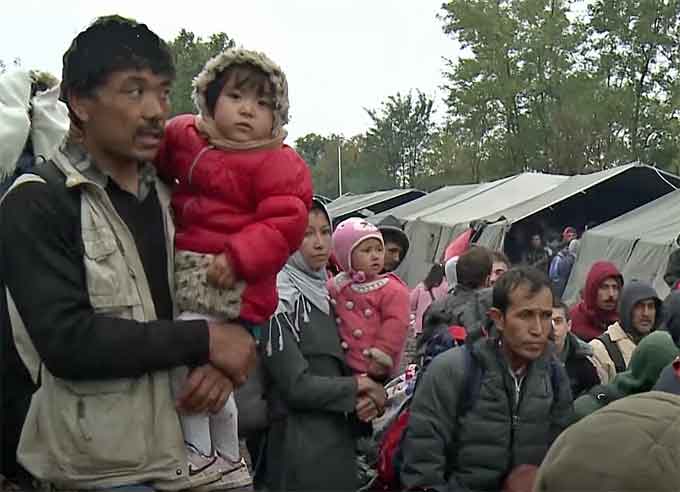
It will be easier for migration and asylum authorities to identify persons entering or staying irregularly in the EU, under new rules informally agreed with EU Council.
Updated rules aiming to reinforce the EURODAC system, designed to store and search data on asylum applicants and irregular migrants, were agreed on Tuesday by Parliament and Council negotiators.
EURODAC makes it easier for EU States to determine responsibility for examining an asylum application by comparing fingerprint datasets.

The new system would help immigration and asylum authorities to better control irregular immigration to the EU, detect secondary movements (migrants moving from the country in which they first arrived to seek protection elsewhere) and facilitate their readmission and return to their countries of origin.
It will also improve the safety of refugee children.
At least 10,000 migrant and refugee children have gone missing since arriving in Europe, according to Europol.
Many of them are feared to be exploited and abused for sexual or labor purposes.
(Children from conflict and poverty-driven countries, separated from their families, begin their journey towards Europe through some of the most dangerous routes. Most times, in hope of reuniting with their loved ones. But those who are lucky enough to reach Europe’s doorstep face another problem, human traffickers. Europol warns that an estimated 10,000 have gone missing after arriving in Europe. Courtesy of TRT World and YouTube. Posted on Oct 17, 2017)
Parliament and Council negotiators agreed on the following reforms:
-
More data:
- In addition to fingerprints, the facial images and alphanumerical data (name, ID or passport number) of asylum seekers and irregular migrants will also be stored.
-
Fingerprinting of minors:
-
The age for obtaining fingerprints and facial images of minors will be lowered from 14 to 6 years, to help identify and trace missing children and establish family links.
-

Force should never be used on minors to take fingerprints or facial images.
However, as a last resort, and where permitted by relevant EU or national law, a “proportionate degree of coercion” may be applied to minors, while ensuring respect for their dignity and physical integrity.
-
Europol access:
- The EU police agency Europol will be able to query the database in a more efficient way in order to detect and prevent terrorist offenses and other serious crimes.
The negotiators also reached a preliminary agreement that data should be registered in the EURODAC system before a decision on admission is made through the resettlement procedure.
The technical details of this part of the agreement still need to be discussed further.

“Today’s provisional agreement will ensure that people do not submit asylum applications in multiple countries while respecting the commitments to EU and international law,” said MEP Monica Macovei, a rapporteur to the European Parliament.
“It will also address fears of threats to internal security by registering and storing the data of irregular migrants.”
“Obtaining the fingerprints and facial images of minors aged 6 years old and above will be crucial to help identify and trace missing children and establish family links, while preventing them from ending up in the hands of human traffickers and smugglers.”
(More than 10,000 children who reached Europe in recent years have disappeared, according to EUROPOL. UN Special Representative on Violence against Children, Marta Santos Pais, speaks about the dangers facing these youngest refugees. Courtesy of The United Nations and YouTube. Posted on Jun 3, 2016)
Next steps
The agreed text now needs to be formally approved by the Civil Liberties Committee, Parliament as a whole and the Council of the EU before entering into force.
The parts of this legislation relating to other instruments of the Common European Asylum System , such as the so-called Dublin rules, will need to be updated once a reform of those instruments is agreed.
(Europol has alerted the authorities to an aspect of the migrant crisis ignored until now; the fact that 10,000 children have gone missing, and will be easy targets for human traffickers. Courtesy of Euronews and YouTube. Posted on Feb 1, 2016)
Background
The proposal for an update of the EURODAC regulation was part of the first package of proposals to reform the Common European Asylum System put forward by the European Commission in May 2016.
The EURODAC database holds and makes it possible to compare fingerprints of asylum seekers in the EU.
It was established in 2003 in relation to the Dublin system, to enable EU member states to determine if an asylum seeker had already applied for asylum in another country.
All EU counties, Iceland, Norway, Liechtenstein and Switzerland use it.
COM(2016)272 – Instelling van „Eurodac” voor de vergelijking van vingerafdrukken (herschikking)
















